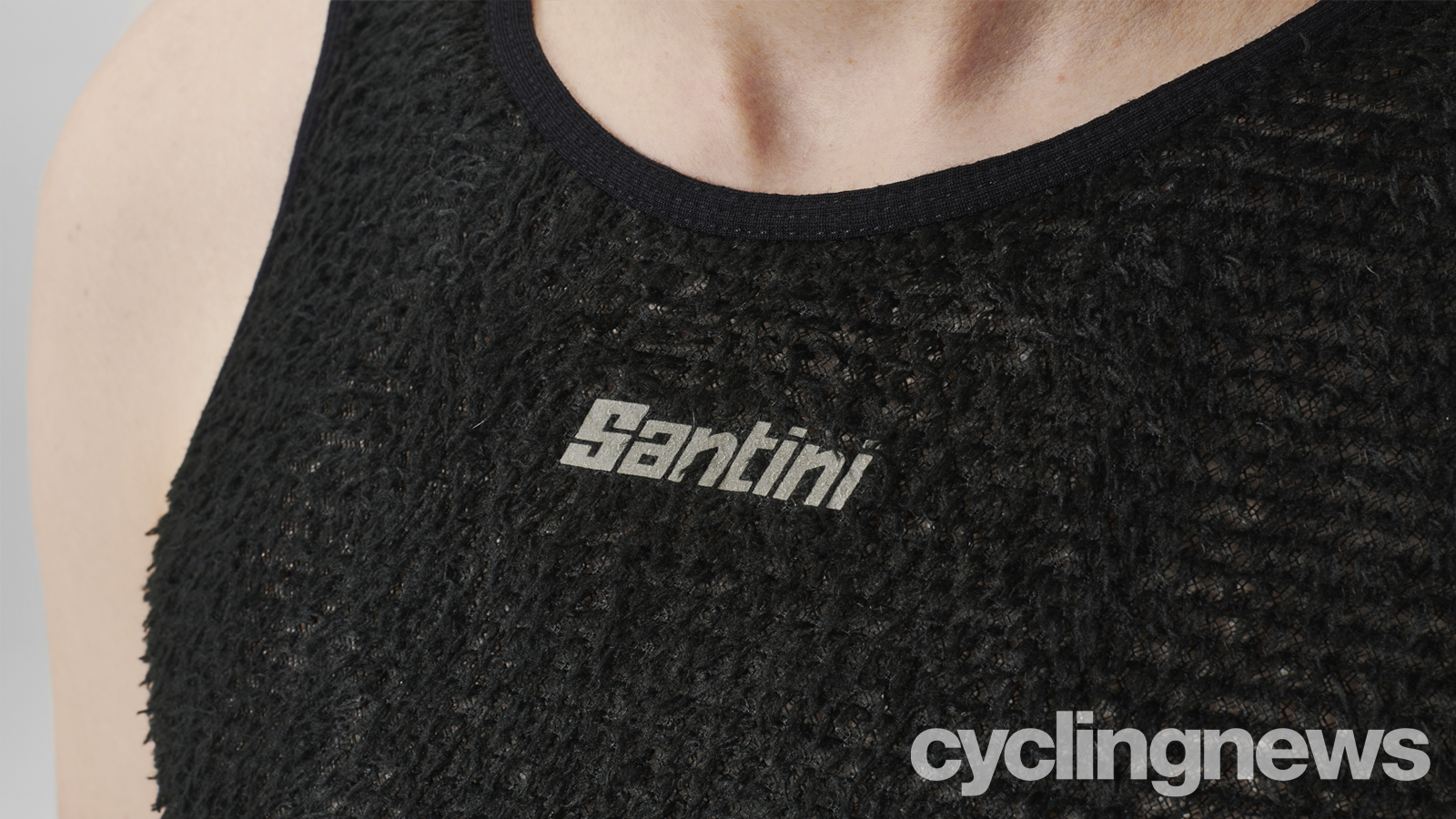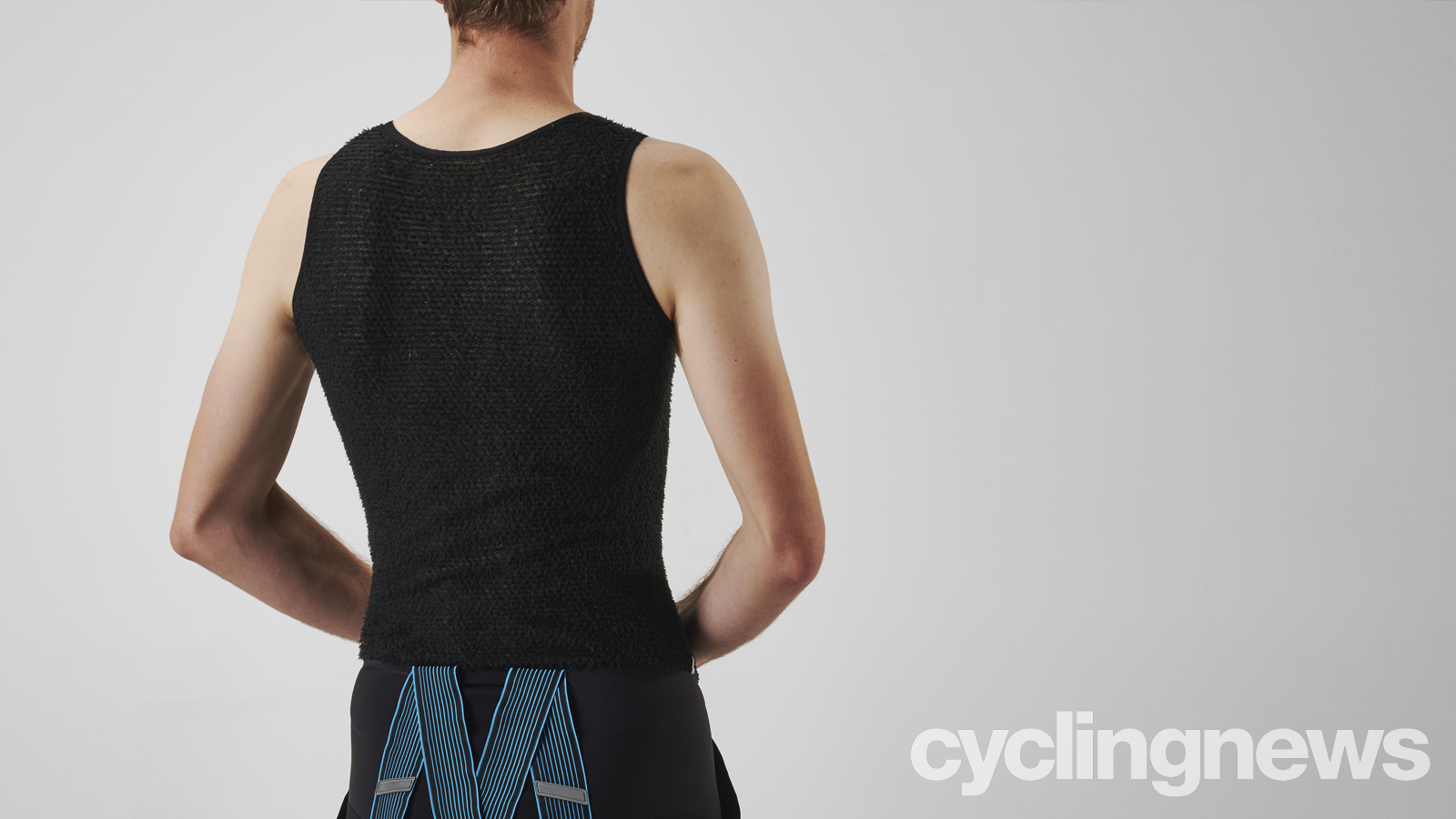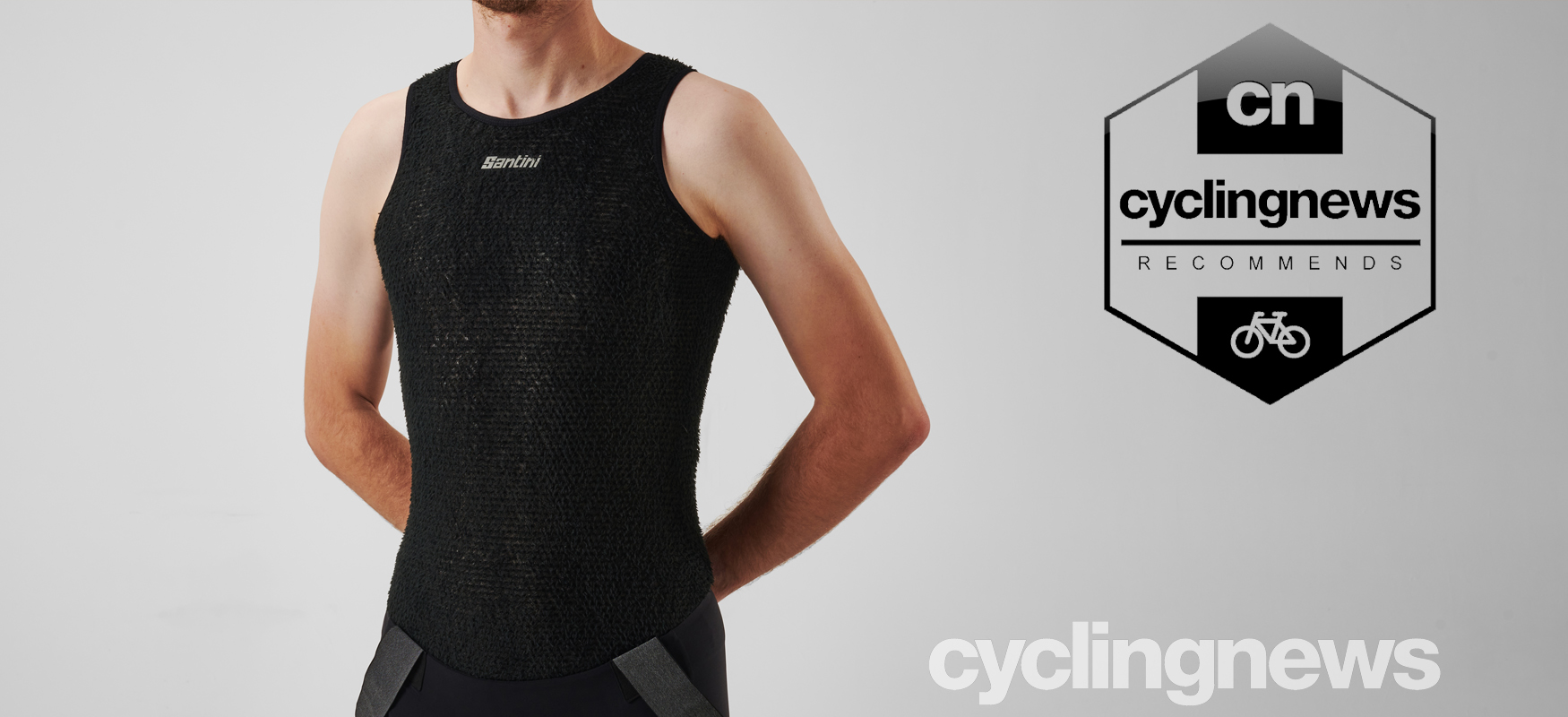Cyclingnews Verdict
Super soft, comfortable and impressive warmth to weight, while being equally good at handling heat means the Santini Alpha is a versatile base layer best suited to shoulder-season weather
Pros
- +
Immense softness against the skin
- +
High-loft Polartec Alpha insulation means great warmth
- +
Hydrophobic material reduces clamminess
Cons
- -
Torso length has shrunk in the wash, despite following instructions
You can trust Cyclingnews
The Santini Alpha base layer is the most unexpectedly good piece of kit I've tested in a very long time. In basic terms, it's a sleeveless base layer, but what really sets it apart is Santini's choice of material. The entire structure of the base layer is made using Polartec Alpha, which is basically a synthetic fleece designed for lofted breathability. It's also hydrophobic, which means it doesn't retain moisture, and the result is a base layer that, for want of a better descriptor, is entirely furry.
When it comes to riding in winter, I've long been a proponent of thick fleece or merino base layers with long sleeves and tall necklines, and then when it comes to summer riding, I'll switch to a sleeveless polyester option. Both styles feature regularly in our guide to the best cycling base layers, and at first, I didn't understand how the Santini Alpha Base Layer would fit into my typical riding routine, let alone be worthy of recommendation.
To me, the idea of a fleecy insulating baselayer without sleeves is a first-rate oxymoron. I really wanted to dislike the Santini Alpha base layer for that very reason, but the truth is, I don't. After a winter of wearing it in everything from sub-freezing to sweaty Zwift rides, I'm ready to share my thoughts.

Design & aesthetics
There's no getting around the fact that the Santini Alpha base layer is a funny looking piece of kit. Of course, rarely does a skin-tight sleeveless base layer scream Paris Fashion Week but in this case, the aesthetics are particularly wild thanks to that Polartec Alpha material. The obvious counterargument to this is that, as a base layer, nobody will actually see it.
It's made from the very simple construction of two panels, front and rear, connected by seams at the shoulders and down each flank. The neckline and arms are folded and stitched to avoid fraying, while the hem is given a slightly elasticated edge to help it to stay put and to help it retain its shape rather than stretching and becoming baggy and bunching up.
It's available in two colours, black or white, and each gets a Santini logo printed onto the chest in a constrasting colour. In the case of the black option, the logo is reflective silver, which is unnecessary but fine. A second rubberised logo is stitched onto the lower right-hand outside, while two labels are stitched into the interior of the seam down your left flank.

Performance
I've already clued you into the idea that I like the Santini Alpha Base Layer, but to reiterate, despite expecting to dislike it, my opinion is quite the opposite.
Don't get me wrong, it's still not perfect for reasons I'll get into shortly, but on the whole, this little ball of fluff has won me over thanks to its comfort and impressive warmth. The inner face of the material - which is slightly less lofted than the outer face - is immensely soft against the skin.
The hydrophobic nature means that it doesn't feel clammy, even on sweaty rides. In one example, I wore the base layer on a cold night beneath the thick Assos Mille GT Ultraz EVO Winter Jacket. Upon finishing, I had worked up a sweat and there was a good amount of moisture kept inside the jacket. The outer face of the Santini Alpha was damp to the touch, but the inner face was dry and I was a comfortable temperature.
Talking of temperature, the level of warmth it provides is seriously impressive given its diminutiveness and the fact that the base layer is largely see-through between the lofted insulative 'fur'. I've worn this down to near-freezing temperatures as the sole layer beneath various winter jackets such as the aforementioned Assos jacket, the Sportful Total Comfort jacket and the Castelli Alpha RoS 2 Light, and only when the temperatures nudged below 0C/32F did I wish for a Buff or lament the lack of sleeves.
I've also worn it indoors on the turbo trainer as a means to see if it could stand up to warmer temperatures and see how it deals with excess body heat, and once again, it performed well beyond expectations. I expected to cook within the trapped insulation, but with a fan aimed at my torso and face, as is my normal preference, the heat dissipated just as well as it does with a more standard polypropylene base layer.
Unfortunately, the lack of sleeves can also create a comfort issue with certain jackets if worn as the sole layer beneath. Softshell jackets are more comfortable against the skin than hardshell rain jackets, but in most cases, they are still less comfortable than a base layer. For this reason alone, a long-sleeve Santini Alpha base layer would be a welcome option. I'm yet to test it, but Le Col's Winter base layer appears to offer a good solution to this.
The other main downside to the Santini Alpha Base Layer is that in the six months I've been testing it, the torso length has shortened by approximately four inches. It was already a little short, but now it finishes above my belly button, leaving around a four-inch gap of uncovered torso, which means it doesn't play too nicely with low-cut bib tights. For this reason, I'd recommend sizing up, especially since there's not a lot of material to it, so any excess material from going a size up will be unlikely to cause bunching or chafing.
Despite this, I'm still persistently choosing to wear it above various alternatives, and that's probably the only compliment a review needs to give.
Verdict
The Santini Alpha base layer is a bit of an oxymoronic concept, with the Polartec Alpha material working hard at winter warmth and the lack of sleeves suggesting the opposite. However, somehow it works and the result is a versatile piece of kit that is good at everything from a few degrees above freezing to hot and sweaty indoor rides.
Long sleeves would certainly improve the base layer's suitability for sub-freezing temperatures, but in turn, it would specialise it, pigeonholing it to a single job at the cost of warmer-weather comfort. I'm sure that would work as a separate piece, but the versatility of this base layer is a selling point on its own.
On paper, the RRP of £49.00 / €49.00 / $57.00 seems like a lot given the minimalism of its construction, but its versatility helps increase the number of miles you'll get in return for your investment.
As a result, for anyone in the northern hemisphere looking for a base layer that can traverse the fluctuating temperatures that the upcoming spring weather can provide, the Santini Alpha gets my vote.

Josh is Associate Editor of Cyclingnews – leading our content on the best bikes, kit and the latest breaking tech stories from the pro peloton. He has been with us since the summer of 2019 and throughout that time he's covered everything from buyer's guides and deals to the latest tech news and reviews.
On the bike, Josh has been riding and racing for over 15 years. He started out racing cross country in his teens back when 26-inch wheels and triple chainsets were still mainstream, but he found favour in road racing in his early 20s, racing at a local and national level for Somerset-based Team Tor 2000. These days he rides indoors for convenience and fitness, and outdoors for fun on road, gravel, 'cross and cross-country bikes, the latter usually with his two dogs in tow.
